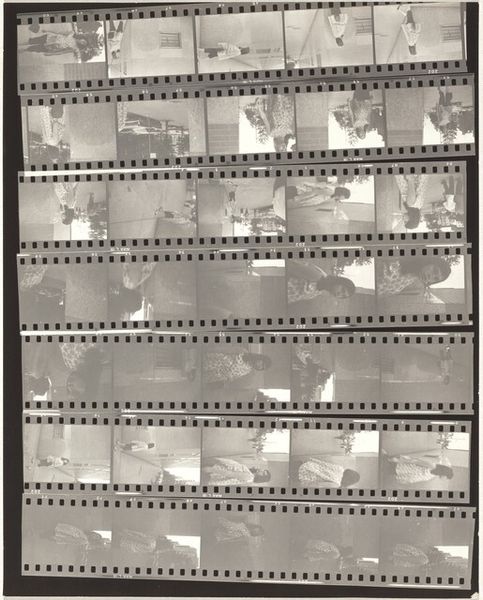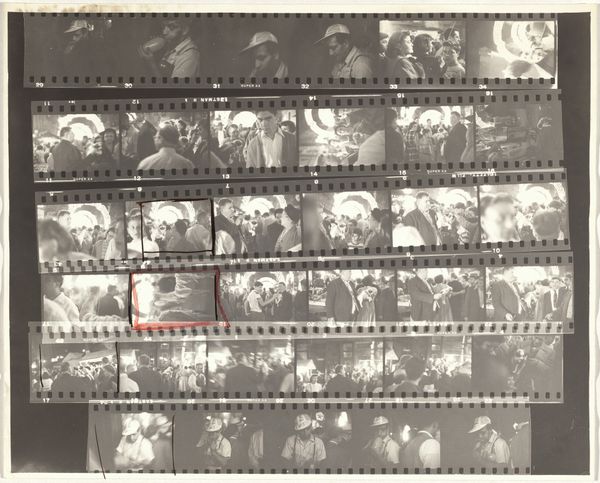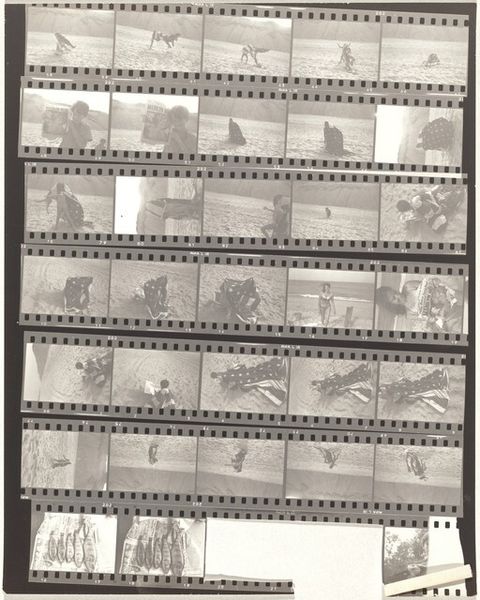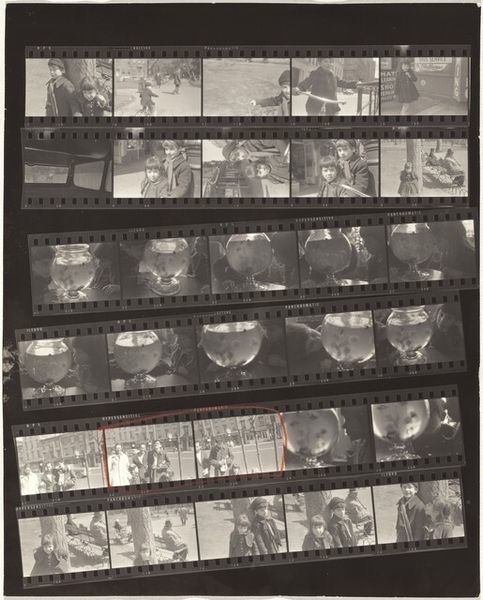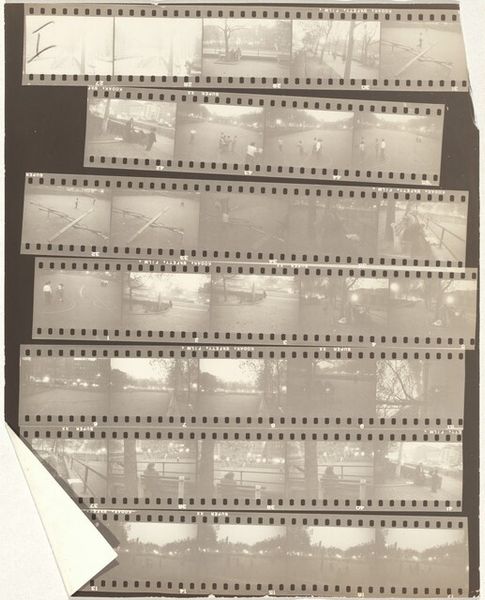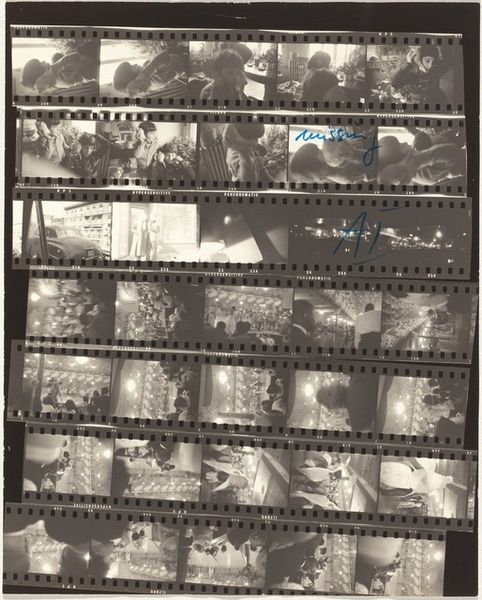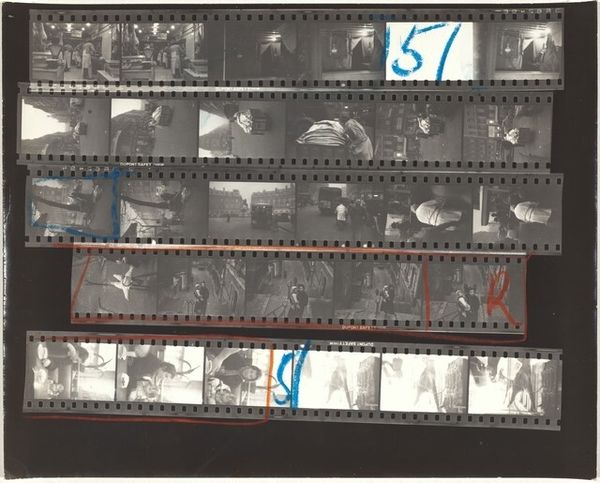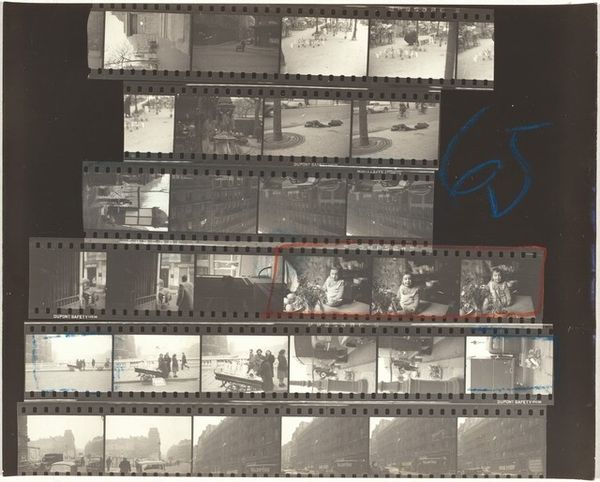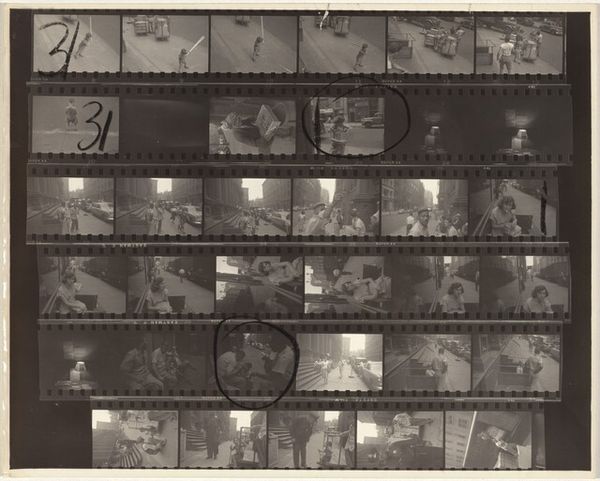
Dimensions: overall: 20.2 x 25.2 cm (7 15/16 x 9 15/16 in.)
Copyright: National Gallery of Art: CC0 1.0
Curator: Robert Frank's "Children and Family 1A" from 1951, presented here as a contact print, is our focus. What's your initial take? Editor: The materiality is the first thing I notice—the raw, unedited feel of the contact print gives a window into Frank’s working process, into the craft. Seeing all the frames laid out like this makes me think about the labor behind image making. Curator: Absolutely. This work resonates deeply when viewed through the lens of the traditional family unit and societal expectations. Each strip encapsulates a story, yet hints at a broader narrative around motherhood. Editor: I see it as a kind of fragmented documentary, maybe a kind of personal diary laid bare. This arrangement moves beyond just taking photos, it's about presenting work in a larger context with a lot of editing involved in his choosing this particular array of photographs.. Curator: His work consistently explored social dynamics, especially focusing on marginalized communities and challenging prevailing ideologies about normalcy and belonging. Editor: I'm interested in what materials are employed and why he used them; you are looking to the image content, themes such as normalcy and what they represented at the time. How Frank chose to present the whole contact sheet also asks questions about labour, consumerism and photographic print practice. It’s not just about snapping a photo but the processes by which they come to exist and by extension the choices in what makes them worth taking at all! Curator: This is a crucial perspective. Frank’s use of contact sheets prompts reflection on how mass production influences our perception of these familial bonds—as a kind of repetition. Editor: Ultimately, this contact sheet encourages me to consider the labour involved, how the making and presentation itself gives agency back from any kind perceived objectivity with mass photography. Curator: Seeing his decisions laid bare in this format also reminds me that families have historically existed along all segments of intersectionality whether recognized legally and/or culturally. Editor: I am now also seeing new images; so much that this format makes visible when his vision comes to our focus, revealing truths only partially exposed by a single photograph on film during its development cycle within broader society’s structures governing the family and representation thereof in society.
Comments
No comments
Be the first to comment and join the conversation on the ultimate creative platform.
